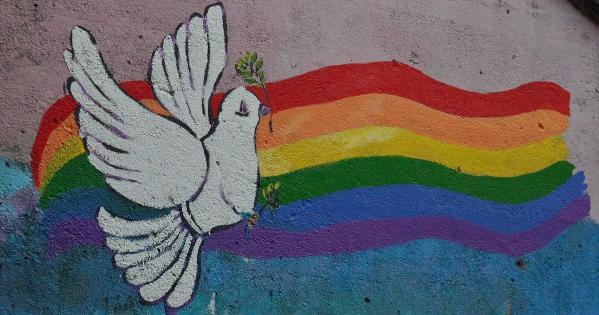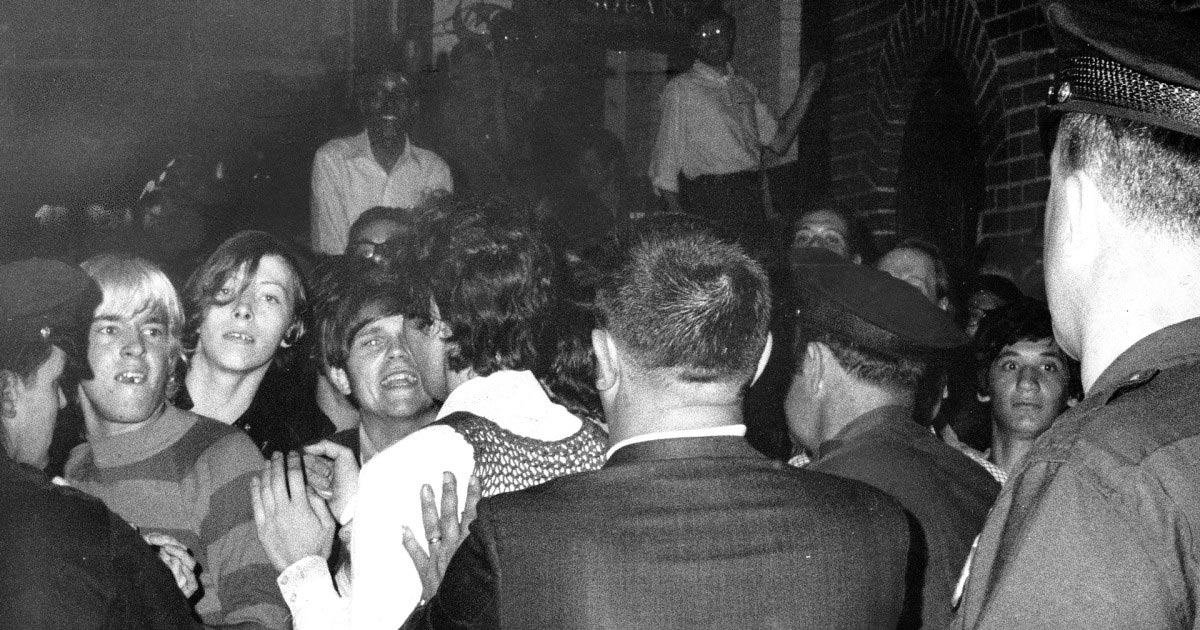The First Pride Was a Riot: The Origins of Pride Month

June is Pride Month, commemorating the Stonewall uprising, which began on June 28, 1969. Though the first Gay Pride Liberation March took place in Manhattan in 1970 to commemorate the one-year anniversary of Stonewall, it took 30 years for Pride Month to become official, in a 1999 proclamation from former President Bill Clinton. Since then, two other presidents, Barack Obama and Joe Biden, have issued further declarations, but the battle for LGBTQ+ rights is far from over.
As Americans observe this Pride Month with celebrations, reflection, and activism, we asked AU’s K. Tyler Christensen, professorial lecturer in the Literature and the Critical Race, Gender, and Culture Studies departments, to share the original Pride story about a group of people who decided to take a stand against injustice in June 1969 at a small bar named Stonewall.
How did it all start?
Pride month started as a riot against police brutality at a small dive bar in New York City called the Stonewall Inn. At the time there existed outdated “masquerade” or “cross-dressing” laws that suggested a “man” or a “woman” must be wearing a certain number of clothing items that matched the gender on their state-issued ID. The police took advantage of these laws to raid drinking establishments and arrest transgender and gender non-conforming individuals. Just after midnight on June 28, 1969, the police raided the Stonewall Inn like they had many times before. Only, this time, something unusual happened: Stonewall patrons fought back.
 Police force people back outside the Stonewall Inn as tensions escalate the morning of June 28, 1969. Photographer: Joseph Ambrosini of the New York Daily News.
Police force people back outside the Stonewall Inn as tensions escalate the morning of June 28, 1969. Photographer: Joseph Ambrosini of the New York Daily News.
Why was this time different — why did people fight back?
In Martin Duberman’s excellent historical account of Stonewall, he cites a chorus of voices, those people that were there that night, like the activist Sylvia Rivera, who was bereft over the death of Judy Garland—whose body lay in state on the afternoon of June 27 on the Upper East Side.
In fact, there are several accounts of that evening and of the five or six days that proceeded to make up the Stonewall Riots. One account suggests that the tipping point came when police tried to arrest a gender-nonconforming “butch” lesbian—that some people credit as Stormé DeLarverie — who somehow evaded the police and began to push against a police car in protest, screaming out to their peers, “Why don’t you do something? Why are you just standing there?” Other accounts suggest it was a Black trans woman, Marsha P. Johnson, that famously threw the first “brick” at Stonewall — though, Johnson has said in interviews that she didn’t get to the Stonewall Inn until two in the morning, after the uprising had already begun.
So, even today, there are still conflicting narratives about Stonewall?
To commemorate the 50th anniversary of the Stonewall Riots in 2019, the New York Times released a short documentary film called, “The Stonewall You Know Is a Myth. And That’s O.K.” The film brings together historians, queer, trans, and media studies scholars, and people that were actually there on the night the riots began. The short film coalesces a collective, studied, if not contradictory, set of memories of that night. One of the most important takeaways comes from the writer Chrysanthemum Tran who says, “Stonewall was a messy evening. LGBT. histories are very messy. I think naming that doesn’t take away from the importance of what happened.”
Does it really matter who threw the first brick? The film’s producer, Shane O’Neill says, “Stonewall was about people reclaiming their own narratives from those that told them they were sick, or pitiful, or didn’t even exist.”
What does Pride Month mean to you, personally?
I love Pride month. My very first Pride celebration was in Salt Lake City, Utah, in 2004. I was 24 and barely out of the closet. I remember feeling euphoric and overwhelmed by the sense of community, the celebration of a public queer life, and a general sense of comradery with others. Celebrating, whether privately with our friends and in our own ways, or out in the streets marching in parades, is an opportunity to remember the work of our queer ancestors to whom we are indebted, and an opportunity to harness the celebratory energy Pride creates to get back to the work of the fight that remains before us.
This story originally appeared on American University's College of Arts and Sciences website on June 10, 2022.